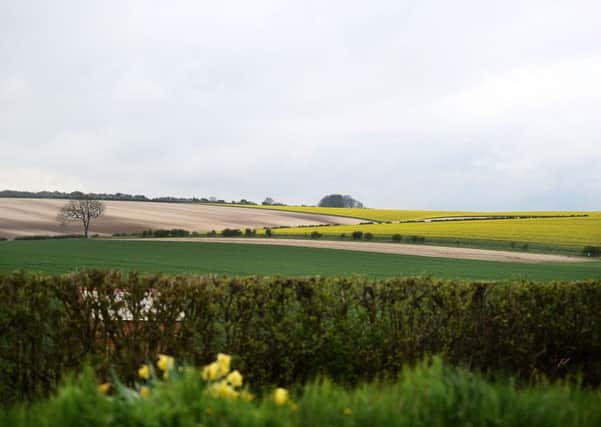Jonny Hughes: Time to re-think our use of land


Scotland’s landscape is shaped by public subsidies and grants. Drive along the M74 from Glasgow to the Border and you’ll see sheep-grazed hills, wind farms, forestry plantations and the occasional broadleaf woodland. The only widespread non-subsidised land use is the charred patchwork of grouse moors. This landscape leaves little room for nature.
Along with climate and topography, the EU’s Common Agricultural Policy (CAP) has moulded land use in Scotland over many decades. Of the £600 million of mostly EU-derived funds we spend each year in rural areas, 90 per cent goes to farmers. Less than one-tenth is linked specifically to conserving wildlife. With Brexit, the amount of money available and how it is spent could change profoundly. In future, it is likely to be the Scottish Government that chooses what the £600m is spent on, or indeed whether it spends £600m at all. Freed from CAP rules, we have a once-in-a-lifetime opportunity to create a healthier countryside where the production of quality food from a quality environment becomes the new cultural norm in Scotland.
Advertisement
Hide AdAdvertisement
Hide AdThe Scottish Wildlife Trust understands the role of public funding in keeping farmers in business. We also know how important farming is to rural communities and the importance of food production to the economy. However, we are aware of the reality that public finances have been under huge pressure for over a decade now. If our government is no longer obliged, as it is now, to ring-fence funds for farmers, it may choose to use this money for other priorities. We therefore need to make a compelling case for continued public investment in land-based businesses. To make this case, we need a new rationale, one that argues for payments for responsible stewardship of our land, not intensive commodity production at all cost.
By rewarding farmers and foresters for providing Scotland’s people with clean water, healthy soils, pollution control, flood protection, attractive landscapes, places for recreation and thriving wildlife we can clearly link public money with public benefit. To be clear, this should not be at the expense of food production. A healthy countryside and quality food production are not just compatible, but co-dependent.
It may mean paying farmers to reduce grazing pressure to allow trees and shrubs to recover in the uplands, or providing wildlife habitats and changing tillage practices on lowland farms. But these measures will also help improve soil fertility, lock up carbon in peatlands and woodlands, and encourage pollinators and farmland birds to recover from recent declines. With the new model we propose we have a chance to diversify the rural economy by supporting other activities as well as farming and forestry. Nature based tourism brings in over £1 billion a year to the Scottish economy, much of which is spent in rural communities.
Let’s use this time of change to shape a healthier future for our rural environment, economy and communities.
l Jonny Hughes is chief executive of the SWT